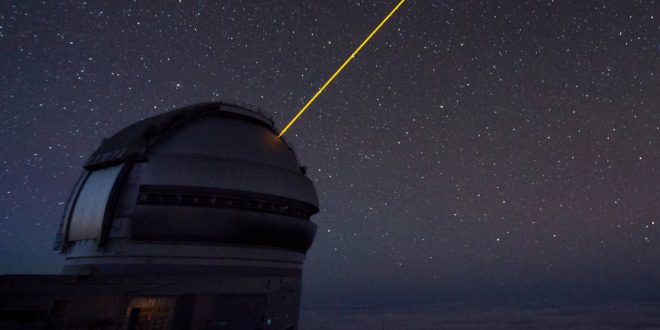Fast radio bursts in space have confused the astronomy community for years. What causes them, and where do they come from? At last, researchers are getting some answers. For the first time, scientists have traced one of these bursts back to its home galaxy.
Rare but powerful bursts of radio waves that have puzzled astronomers for years have now been tied to a galaxy. But the galaxy isn’t a dynamic star factory – it’s an old dwarf galaxy, around a 100th the mass of our own Milky Way galaxy and more than three billion light-years from Earth.
Shriharsh Tendulkar from McGill University in Canada and colleagues observed a repeating fast radio burst with a slew of telescopes around the world to pinpoint the source’s location. They presented their findings at the meeting of the American Astronomical Society in Grapevine, Texas, and papers are also published in Nature and The Astrophysical Journal Letters.
Fast radio bursts have perplexed astronomers since 2007 when astronomers trawling through data gathered by the Parkes Radio Telescope in New South Wales in Australia found a number of short, sharp blasts of energy from space.
Typically lasting only a few milliseconds, not much else is known about them. What powers the bursts? How far are they from the Milky Way?
Some astrophysicists, such as Matthew Bailes from Swinburne University of Technology in Melbourne, Australia – who was involved in the first Australian fast radio burst detections – think the explosions might be emanating from a type of dense neutron star called a pulsar.
Pulsars are generally found in galactic regions undergoing vigorous star formation, so it was a “complete shock”, Bailes says, when FRB 121102 was localised to a tiny dim smudge of a galaxy. “Instead of being in a massive star-forming galaxy, it’s in a pathetic little dwarf thing.”
The story of fast radio burst FRB 121102 begins in November 2012, when it was observed at the Arecibo Observatory in Puerto Rico. But unlike other known fast radio bursts, this one repeated.
Researchers swung the Karl G Jansky Very Large Array (VLA), composed of 27 antennae in New Mexico, US into action. The array can see the fine detail needed to precisely determine an object’s location in the sky.
Over 83 hours of observing time in 2016, the VLA picked up nine bursts from FRB 121102. European and American radio arrays pinpointed the source to within a region roughly 100 light-years in diameter, some 200 times more precise than previous measurements.
Deep imaging by the Gemini North telescope in Hawaii allowed the researchers to get a 3-D lock on the source – an optically faint dwarf galaxy that also emits low-level radio waves, typical of a galaxy with a central supermassive black hole.
Tendulkar says that this dwarf galaxy contains relatively few stars, but it’s forming them at a high rate, so fast radio bursts might still be linked to younger neutron stars.
Two other types of extreme event – long duration gamma-ray bursts and superluminous supernovae – also tend to pop up in dwarf galaxies.
“This discovery may hint at links between fast radio bursts and those two kinds of events,” Tendulkar suggests.
The source also seems to be right next to the galaxy’s supermassive black hole – surprisingly close. Could it have something to do with the blasts? It might, but not in the way you might assume.
When a supermassive black hole drags matter towards its event horizon, the matter forms a disc. The disc’s rapid spin and resulting friction between atoms and molecules mean vast amounts of light and heat can be generated too. But these blasts are on the order of minutes to hours – not milliseconds, like the fast radio bursts.
FRB 121102 is also “kind of curious”, Bailes says. The repeated bursts seem to last a tiny bit longer than non-repeating fast radio bursts. “This raises the questions: are there two classes of FRB – repeater and non-repeater? Are they related? Is the supermassive black hole a key ingredient, or is its localisation a coincidence?”
A top candidate, the researchers suggest, is a young neutron star – maybe a super-magnetic magnetar – surrounded by material ejected by a supernova explosion or material ejected by a resulting pulsar. Another might be an active supermassive black hole in the galaxy, with radio waves spewing from jets of material emitted from the black hole’s surrounds.
To find out, astronomers will need more fast radio bursts. New telescopes on the horizon will help.
The Australian Square Kilometre Array Pathfinder (ASKAP) might find them around 20 times faster than Parkes, Bailes says, and the parabolic troughs of Canadian Hydrogen Intensity Mapping (CHIME) telescope, under construction in Canada, might find them 200 times faster.
Agencies/Canadajournal
 Canada Journal – News of the World Articles and videos to bring you the biggest Canadian news stories from across the country every day
Canada Journal – News of the World Articles and videos to bring you the biggest Canadian news stories from across the country every day



